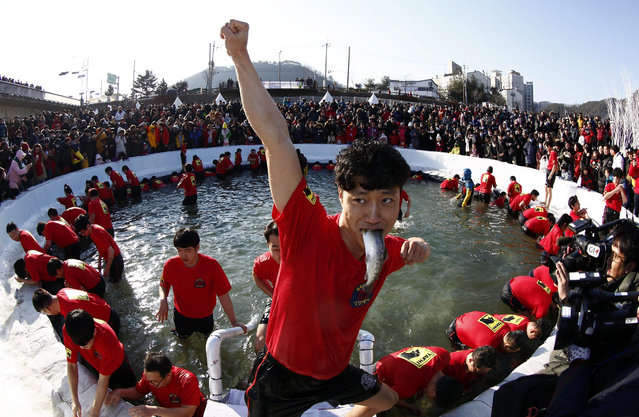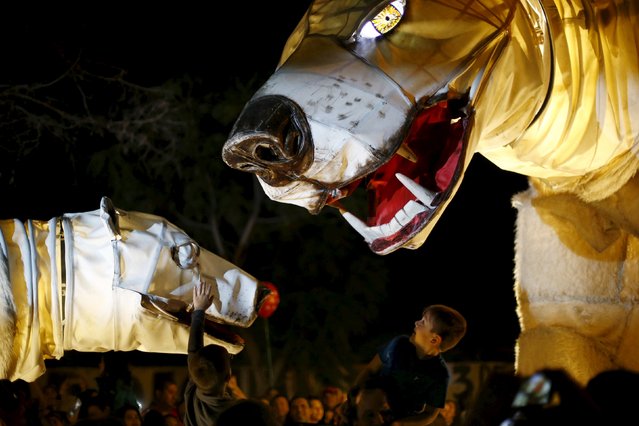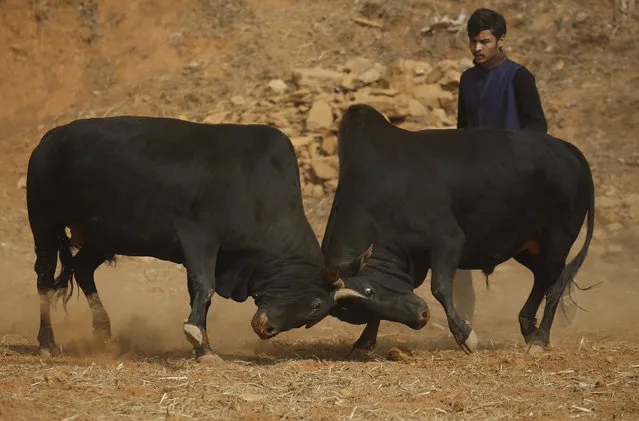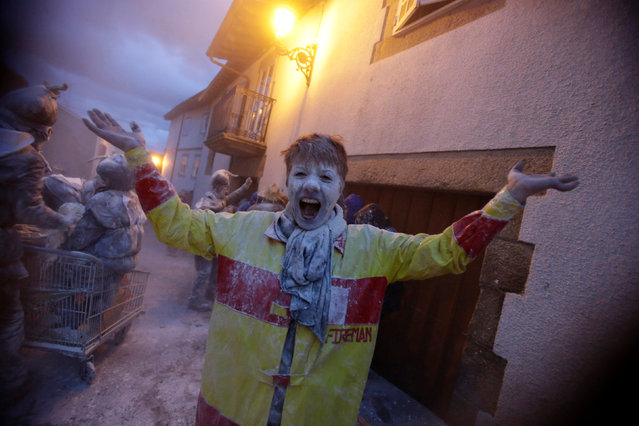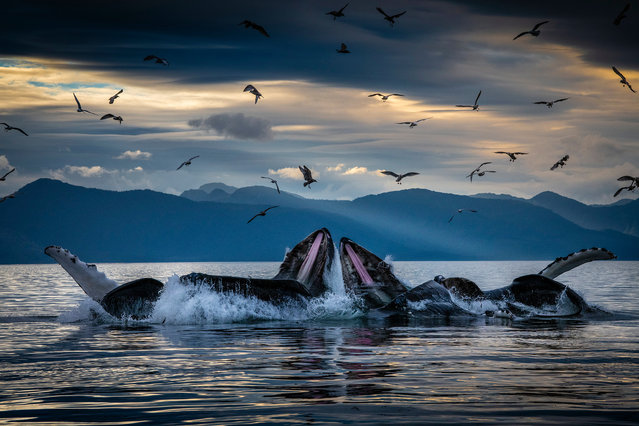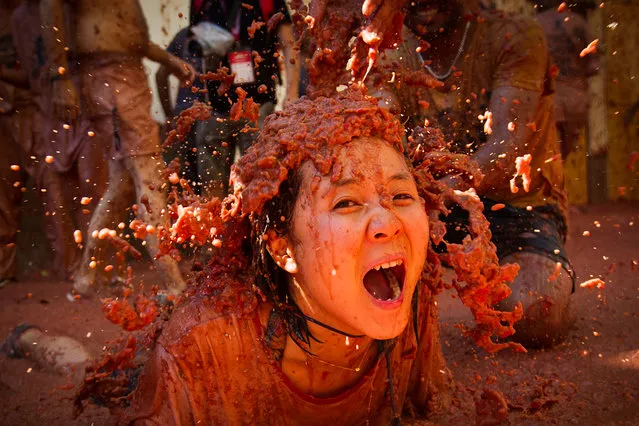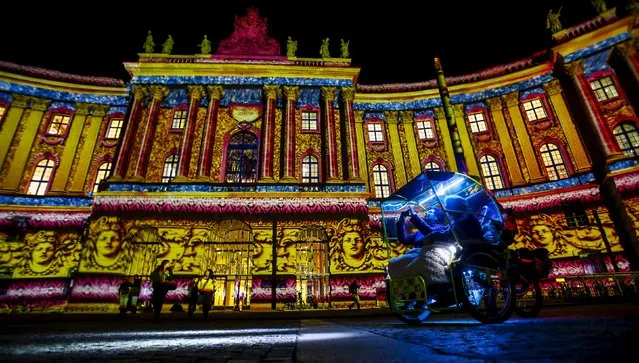
People in an illuminated cycle rickshaw look at a light installation at the Old Royal Library during the opening day of the "Festival of Light" show in Berlin, Germany, October 9, 2015. (Photo by Hannibal Hanschke/Reuters)
12 Oct 2015 08:03:00,post received
0 comments

